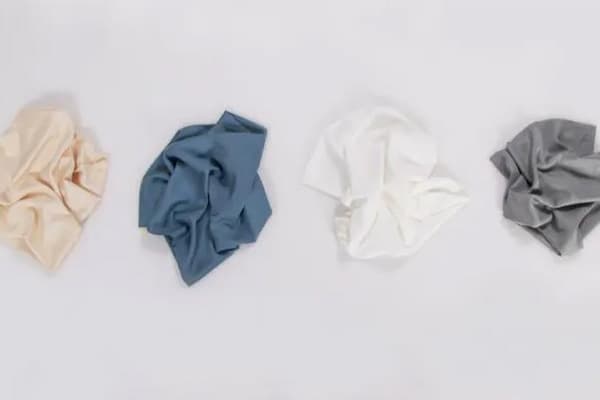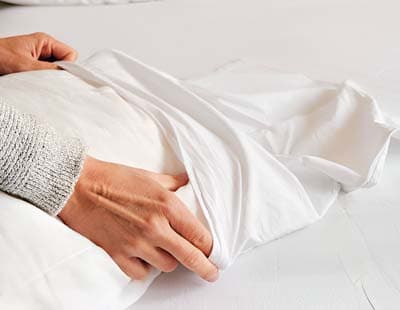Finding high quality bed sheets involves a lot more than just looking at the price tag. Understanding the different types of fabrics used in bed sheets can help you decide which sheet best fits your needs.
Bed Sheet materials:
Egyptian Cotton
Egyptian cotton is an extra-long staple cotton grown in Egypt along the Nile river. The long and durable cotton fibers create a soft and durable sheet when sewn together. 100% Egyptian cotton sheets are some of the softest, strongest, and most breathable on the market. On the flip side, true Egyptian cotton sheets can be very expensive.
Cotton Blend
Cotton blends are usually combinations of cotton mixed with polyester, rayon, or bamboo. Typically, these sheets are 60% cotton and 40% polyester. The cotton blend is a good choice for someone looking into a lower priced bed sheet with less care. The polyester in the sheet makes the fabric wrinkle resistant and easy to wash. These sheets last much longer than your typical 100% cotton sheets, but that doesn’t come without its downsides. Cotton blends don’t breathe well and can lead to a hot night’s sleep. Also, if you have sensitive skin, the polyester may irritate you and become uncomfortable at night.
Organic Cotton
Organic cotton bed sheets are grown, harvested, processed, and manufactured without any harmful pesticides or chemicals. Bedding often contains chemicals added during the manufacturing process to keep sheets from wrinkling. Meaning your skin is in direct contact with these chemicals when you sleep! The best way to buy organic bed sheets is to buy from a reliable retailer that has the “GOTS”, or Global Organic Textile Standard label. Only 0.1% of the cotton supply is organic. Mainly because the cost is so high for farmers. Organic crops yield less cotton and the limited supply creates a surcharge on anything it produces. For the best organic cotton sheets check out (link).
Silk
There’re a few things to investigate when searching for a quality set of silk sheets. First, you are probably going to want to find yourself a true 100% silk sheet. Most silk sheets are blended with satin giving them a slippery texture. Consumers often complain the satin blend makes the sheets so slippery that it’s difficult to get up in the morning and that blankets often fall of the bed. 100% silk sheets on the contrary, are less slippery, yet maintain a beautiful shine to them. Authentic silk sheets are classified by “momme weight”, similar to thread count for cotton sheets. Good quality silk sheets are normally between 12-19mm. A major factor when purchasing silk sheets, as with any type of bedding material, is to justify weather or not the benefits outweigh the costs. Although silk sheets are known to be soft and luxurious, they tend to be expensive, extremely warm, and can only be washed in the washer in dryer with a special silk detergent.
Polyester
Polyester and microfiber are synthetic blends that allow for a much more durable and affordable bed sheet. Polyester and microfiber typically don’t shrink, are wrinkle resistant, and rarely stain. Microfiber sheets are measured by GSM, the weight in grams per square meter. The higher the GSM, the thicker the sheet will be. Most microfiber sheets have a higher thread count than cotton sheets, but because the yarns are thinner and shorter, it makes them more lightweight. A good sheet set like These will usually have a GSM rating of 90. This is a perfect combination of strength, weight and quality.
Bamboo
Bamboo sheets have grown in popularity over the past few years primarily due to the sustainable way they are manufactured. Bamboo is sustainable, soft, naturally antimicrobial, and moisture absorbing, a perfect combination for any sheet set. Bamboo is usually grown in china where the plant has a long-life span and requires very little water, making it a great choice for green thumbs. As with cotton and silk sheets, be careful of bamboo imposters. Some manufacturers blend their bamboo sheets with polyester. Most high quality 100% bamboo sheets run for over $100.
Linen
Linen, derived from the flax plant, is one of the oldest cultivated plants in human history. Linen has a unique ability to ventilate well, absorb moisture, is hypoallergenic, and bacteria resistant. This fabric is great at keeping you warm in the winter and cool in the summer due to its high air permeability and heat conducting properties. Linen is more durable than cotton, crispy, and has a natural textured look. Linen is best washed in cold water on a gentle cycle and tumble dried on low heat. The downside of linen sheets is that they are not as soft as cotton sheets and can take years of washing before they start to become less rough to the touch. Bed Sheet Washing Tips












